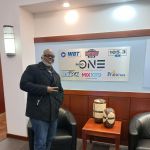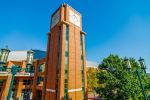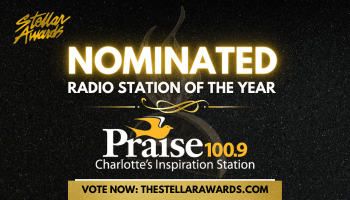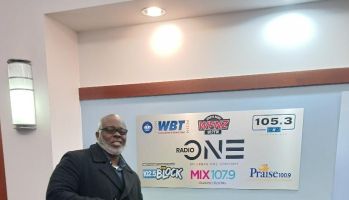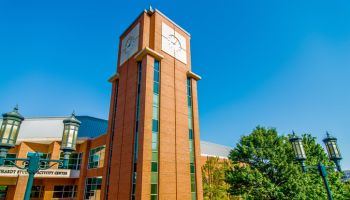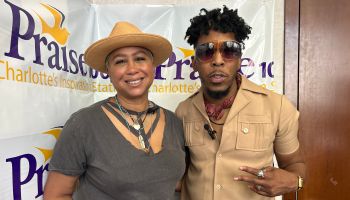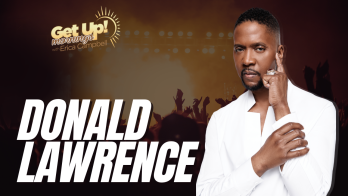HBCUs, or Historically Black Colleges and Universities, have long been a major source of pride for aspiring African-Americans. Yet, between significant financial woes and questions regarding their relevancy, some wonder if these institutions of higher learning are becoming historical in the existential sense.
Mostly founded by philanthropists, HBCUs emerged to feed the industrial need to turn freed slaves into teachers and skilled workers in the post-Civil-War nation. Around the turn of the 20th century, Hampton University in Hampton, Va., and Fisk University in Nashville, Tenn., turned men like Booker T. Washington and W.E.B. Dubois, respectively, into giants. Today, while Hampton and Atlanta’s Spelman College are reportedly thriving, Fisk, though classified by U.S. News & World Report as a top HBCU, currently has an enrollment of just over 770 undergraduates.
Washington, D.C.’s Howard University, chartered in 1867 and consistently ranked as an elite HBCU, was under the spotlight in February after a New York Times story exposed a crisis at the alma mater of world luminaries like Thurgood Marshall and Toni Morrison. Between the surprise resignation of Howard President Sidney A. Ribeau; new Parent Plus Loan qualification rules, which are said to have unintentionally kept an estimated 17,000 students nationwide from returning to classes this year (including 585 Howard students); and increasing competition from “PWIs” (predominantly white institutions) recruiting strong minority students, there becomes an obvious story for broad concern for the current state of all HBCUs.
The U.S. recession could be partially to blame for the perception of declining status, solvency and prestige at HBCUs. Assuming the presidency of Howard just as the economic downturn was beginning in 2008, Ribeau’s resignation came after five years in which the school experienced a downgraded credit rating from Moody’s Investor Services and significant drops in its enrollment and position on U.S. News & World Report’s influential Best Colleges Rankings.
While economic realities and unlucky timing may have been a factor in Ribeau stepping down, U.S. News later said that part of their reasoning for the 22-point drop on the list was that Howard failed to release two years of financial reporting to the magazine, which it called “administrative inability,” in addition to considerations such as lowered academic peer assessment, graduation and retention rates, student selectivity, faculty resources, alumni giving and other performance indicators.
As for Parent PLUS, though the Obama administration has taken action to loosen the recently restrictive credit requirements in 2015, many applicants were denied admissions to HBCUs during the past two years for what the program considers “adverse credit history,” which included any outstanding debt balance held over 90 days. According to a report by the United Negro College Fund titled “The Parent Plus Loan Crisis,” even parents who’d received financial assistance previously and were in good standing were denied loans due to debts on their credit reports going to collections or being charged off. The same UNCF report says attending an HBCU costs 30 percent less than tuition at all other not-for-profit four-year colleges and universities (approximately $10,000 on average). If parents and prospective students are questioning whether or not a more cost-effective education can offer comparable educational value, such negative news and potential for outside competition may be the exact motivation that HBCUs need to regain their glory.
Today, there are 106 HBCUs in America. Since the 1970s, more than a half dozen have closed. That includes Bishop College in Marshall, Texas, Daniel Payne College in Birmingham, Ala., Atlanta’s Morris Brown College—the only HBCU founded by African-Americans—and Saint Paul’s College in Lawrenceville, Va., all which have shuttered due to financial mismanagement and/or loss of accreditation. With so much bad news, it’s easy to assume the worst is yet to come, but those in leadership positions at these venerated halls of knowledge remain optimistic.
Dr. Helen T. McAlpine has led J.F. Drake State Community and Technical College, located in Huntsville, Ala., since 2000. McAlpine is an HBCU alumna, with a B.A. from Talladega College, and an M.S. from Jacksonville State University. President Obama also named her to his Board of Advisors on HBCUs, which advises the U.S. Secretary of Education and makes recommendations to the executive office on the private sector’s role in enhancing HBCUs’ long-term viability. Having run two of the country’s 14 two-year HBCUs (she briefly served as interim president of Gadsden State Community College this summer), Dr. McAlpine says Drake is “transforming lives.” “We take students everybody gave up on,” she says, “and we give hope to some that I’m not sure would find it any other place.”
Dr. McAlpine says that grant-writing and acquisition are how many HBCUs are currently surviving. “Financially, the situation is abysmal,” she acknowledges. “We don’t get a lot of money from legislature.If it weren’t for donors, fundraising and grants, it would be dire straits for many of us.” She goes on to mention that, after receiving two-year degrees at schools like Drake, many students transfer to four-year colleges. For many of them, where they receive their final degree is where they send checks. “We’re not receiving the financial support we’re worthy of, but we’re getting there.”
About a mile away in Normal, Ala., Dr. Virginia Caples is 1890 Administrator for the Alabama Cooperative Extension System at Alabama A&M University, where she also served as provost/vice president of academic affairs and interim president during two leadership transitions. Throughout her 30-plus-year career in post-secondary education, she has also held faculty or staff positions at Iowa State University in Ames, Iowa, South Carolina State University in Orangeburg, S. C., and Alcorn State University in Lorman, Miss.
“I’m not talking about what I think, but what I’ve experienced over the years,” Dr. Caples says. “It’s my observation that historically white institutions are going to pick up some underserved minority students, but they aren’t going to pick up the majority. So if there aren’t places like HBCUs that still have the commitment, then you’re going to have generations and numbers of these students who are not going to be served by higher education.”
“We continue to tell young people that their best bet for economic advancement and enhancement is through education,” she maintains, “so I think that’s one of the most important things we should be [concerned] about in the future. It’s surely my belief that one of the values of HBCUs is the fact that there still is a level of commitment to un-served and underserved minority students. In the very near and long-term future, be it the next 10-20 years, there still is going to be that need, and I am so hopeful that HBCUs will not move away or begin wanting to be a carbon copy of the historically white institutions.”
Some, however, believe the schools ironically lack the diversity of PWIs. Ciandre Taylor, who attended Morris Brown for a year in 1995 before transferring, says she was concerned with being typecast. “I knew I wouldn’t work in an all-black environment, so there’s a con in attending an HBCU when looking for a job in the real world because of where you attended school, so I left and decided to go to a regular university.”
Norfolk State graduate Michael Harris recalls limited resources being one of the most frustrating HBCU realities. “I remember being a part of a group project, and we were submitting an advertising campaign and competing with other schools. We placed, but if we had the financial resources the white schools had, we would have done more. We actually came out of our own pockets for material and props for our presentation while other schools had financial floodgates opened from their respective departments. But the one lesson learned from that is you learn how to be crafty and make a success.” Morgan State University alumni Amir Boyd agrees, remembering that although the campus library was often ill-equipped, “I always felt like I learned more about myself and my people than I did from anything that was in the books. I think it’s very important to see other people like us trying to achieve the greatness of higher learning.”
For her part, Dr. McAlpine is unmoved when it comes to the value of HBCUs. “I talk a lot in speeches of returning to the village concept. We’ve gotten away from it, but all of us have a responsibility to always put our best foot forward, and we have to use whatever resources we can to get that message out there. Our task is challenging, but I love education, and I believe so strongly that the work we do with students impacts this country. I’m absolutely convinced of that.”
The Current State of HBCUs: It’s a Mixed Bag, but Many Remain Hopeful was originally published on newsone.com



